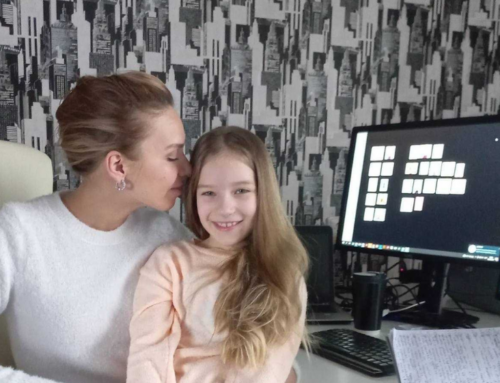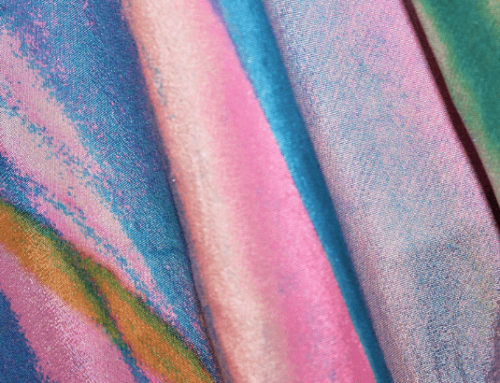As women, we’ve all been there: 9:30 a.m., a critical meeting with a client or an important job interview. You turn to grab your meeting notes from your fashionable black leather bag when it happens.
Snap.
Your bra strap. Again. And there’s no time to rush from the conference room for an adjustment. Bravely, you face your colleagues and stumble through your presentation, hoping all the while that no one notices how uncomfortable you feel.
 Engineering the Perfect Fit
Engineering the Perfect Fit
As the owner and creator of ZeBra Bras, Hannah Johnson describes her entry into the fashion world as unconventional, even accidental: “I was looking for a tech startup, and I’d been discussing possibilities with a guy whose specialty was 3D imaging and printing. One day, as I was adjusting my bra for the hundredth time, I thought ‘there has to be a better way for this to fit.’ I realized that custom would fit better and that I knew someone who could help me set it up.”
Next came the idea for a clever name, and the concept of ZeBra Bras was born. “I came up with a long list of puns to try to find something that worked. The name ZeBra Bras really got the point of our business across, and lent itself to a logo and visuals really well.” The business operates from a small shop in downtown Troy, NY.
For a company with a funny name, ZeBra Bras takes bra-making and fashion very seriously. Hannah still views ZeBra Bras as a tech business, though their business is fashion. Tech can help to overcome women’s concerns about buying a custom-made bra over the internet, for one thing. To service Balodana’s online customers, Hannah generates a unique pattern with the client’s measurements using 3D modeling. “Non-standard bodies are where we thrive because we’re able to make a bra designed especially for them, rather than altering a pre-existing product.”
Because results are so personalized, the 3D modeling process requires precision and accuracy. Hannah encourages her customers to be honest about their measurements to ensure a better fit: “We have a tendency to fixate on what we think numbers and sizes mean,” she explains. “When measuring, I tell my clients to ignore the urge to shave off that half inch. An accurate measurement is key to achieving the perfect fit, which in turn creates a bra that looks and feels amazing.”
Who Buys Bras Anyway?
When Hannah first created her line of made-to-measure bras, she had two types of clients in mind. The first are women who have a long history of struggling to find the perfect bra. They view bras as a frustrating necessity, and their undergarment collection consists of beige bras that are just “okay.” They’re shopping for something better fitting with a lot of support and perhaps a little pizzazz.
Hannah’s younger customers are also interested in trying something different. They’re usually looking for a comfortable bra that they don’t have to think about during their day, and they are passionate about sustainable fashion initiatives and supporting small business.
The ZeBra Bra line also features binders and breast forms, designs that are vital for individuals in the process of gender transition. Binders and breast forms are especially critical in helping a person to match their appearance with their ideal image of themselves. Plus, offering non-standard sizes gives more people access to the products that they already know they deserve.
“Creating a safe space for customers to discuss gender is an affirming step for those who are transitioning,” Hannah says. “Even a subtle change, like wearing a bralette for the first time, can help people feel more like themselves. Moreover, they’re not having to walk into a store and come out to a salesperson just to buy their first bra.”
A Commitment to Sustainable Fashion
A lot of thought goes into each of ZeBra Bras’ designs; customers may know what they like, but ZeBra Bras finds a way to engineer the perfect fit. “We’ll see someone like a large-busted customer who wants a front-clasp bra without an underwire, and we have to adjust our design and manufacturing process to give that customer the support they need with the design they’re requesting.”
Designing a custom fit isn’t without its difficulties, however. “We’ve had a lot of trouble with streamlining our manufacturing process,” explains Hannah. “We’ve talked to experts who specialize in automating manufacturing, and the complexity of our sewing process has stumped them so far. We also put a lot more time into each product that we sell than most other companies.”
In addition to creating nonstandard designs, ZeBra Bras also incorporates low-waste initiatives into their creative process. “At the end of the day, producing each bra individually means that we don’t have to throw out products that haven’t sold. We use as much of each bolt of fabric as possible, cutting out pieces with as little waste as possible, and reusing weirdly-shaped leftovers whenever we can.”
ZeBra Bras is also committed to paying living wages to employees, and providing them with training so they can acquire new skills and continue to build their careers. Raw materials and fabrics are purchased mainly from manufacturers whose values reflect the same standards for fair labor practices. Hannah is hopeful that as the company grows, so too will ZeBras’ ability to have an impact on the textiles industry: “We’re not large enough right now to influence our suppliers’ labor practices, but we hope to be able to someday soon.”
What Makes a Great Bra?
Despite the challenges that come with producing tailor-made garments, Hannah attests that she enjoys working in the bespoke fashion industry. “I love how unique each product is, and I love helping people get a bra that solves problems they’ve had their whole lives.”
Her best advice for new customers is to not be shy: “Our products always fit best when our customers share all of their thoughts about bras. Learning about their dislikes is especially helpful, since we can design the bras to avoid those problems.”
Want to get a ZeBra of your own? Start here: https://balodana.com/designers/zebra-bras


